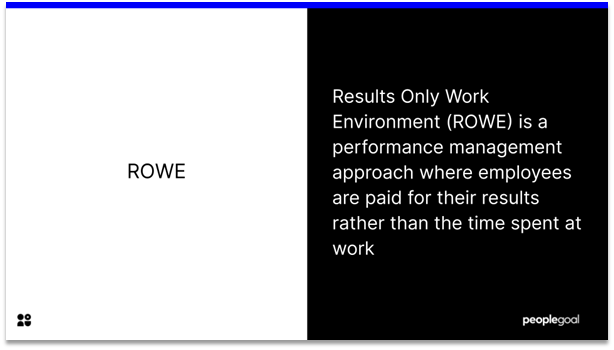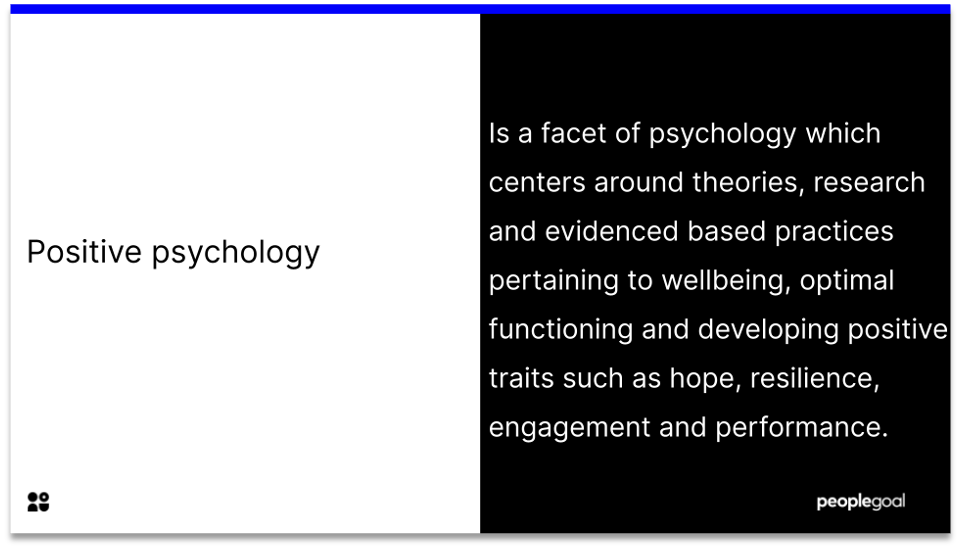Communicating well when working remotely can be a challenge. We lack face-to-face communication, and tone can be difficult to read in Slack messages or emails.
It’s important that managers create a communication plan for work-from-home. During times of change, it’s key to build trust. In this blogpost, we’ll explore how collaboration and clarity is still possible, even if we are working in different time zones and home offices.
1) Avoid an ‘always on’ culture for better employee communications
One of the dangers of remote work is that it creates an ‘always on’ culture. This is when no boundaries are set for work communications. The assumption goes that if social technology means we are always available to answer a query – why not respond to a message at 10pm from a colleague?
According to Myer Briggs Company research, some personality types fare much better than others in flexible working environments. Most employees will fare better if they are able to set clear boundaries between work and home life.
So how do we avoid an ‘always on’ culture. Managers should set clear expectations and working hours. While staff may be required to work overtime on some occasions, when they are off the clock they have the permission to fully switch off.
This means – setting yourself as inactive for messages. Turn off notifications if necessary.
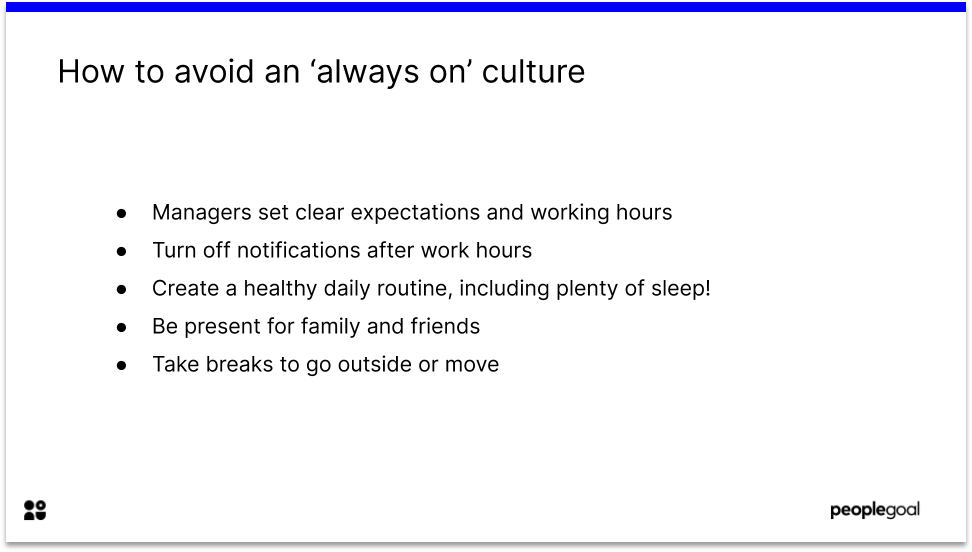
2) Make clarity a priority in employee communications
We’ve all had moments where we’ve misunderstood a colleague’s comment in an email. Tone is difficult to convey through instant messaging. Emojis alone will not resolve this.
Prioritize clarity during remote internal communications. We rely on non-verbal indicators – tone, facial expressions or gestures when understanding others. Indeed, some estimates think 80% of communication is non-verbal! Turn on video during Zoom meetings to help bridge the distance.
Combine different forms of communication – written and verbal, for an effective communication strategy. Summarize the key points from a meeting in a Slack channel, even if you think you were clear in the meeting.
Tips for Clearer Communication
- Make use of body language and tone by switching on video
- Repeat information in different channels – verbal and written
- Make time for questions about tasks
3) Keep communication regular and consistent
Remember that during work-from-home, we are no longer able to check-in with colleagues at the coffee machine. Managers can’t track employee progress during the day in the same way. Instead, these interactions must be planned.
Choose a time of day – either mornings or daily round ups, where employees feel like a check-in is most useful. You may not have done this before the pandemic, but it’s really important that employees have some scheduled time in which to ask questions, voice concerns or findings.
Even a 15-minute check-in can reassure and boost employee experience.
Tips for Virtual Daily Check-Ins
- Leave a few minutes for small talk
- Keep it short – but ensure employees do not feel rushed or unheard
- Either in the morning or end of the day – Make it regular so that everyone remembers!
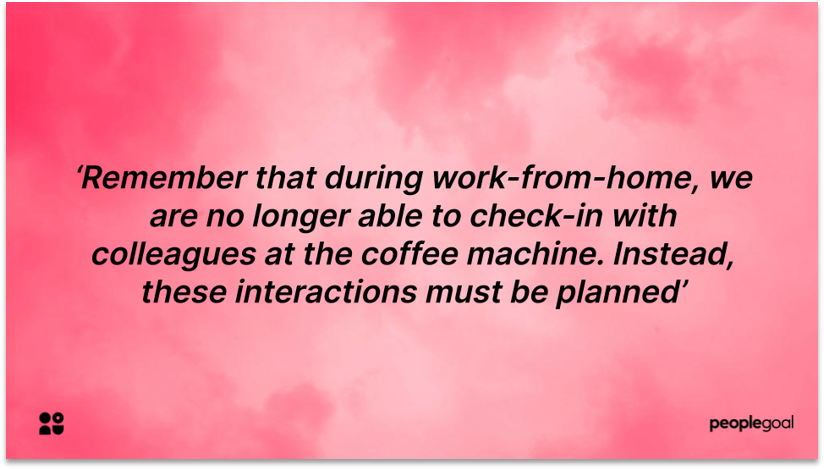
4) Avoid overcommunication
According to Gallup, 29% of US employees who worked remotely during the pandemic reported experiencing burnout ‘Very Often’ or ‘Always’.
Companies sometimes fall into the overscheduling trap – with meetings that were never necessary before suddenly a daily occurrence. This can greatly reduce productivity and the wellbeing of staff.
There is no need to overcompensate for the distance. Managers should cultivate a virtual ‘open door policy’ and invite employees to come to them if they have any queries. This can help improve employee engagement.
Manager Virtual Open-Door Policy
- Use instant messaging, e.g. on mobile apps, so that employees have a quick and easy port-of-call
- Invite questions
- Respond quickly to queries
- Don’t overschedule meetings that are not relevant to all employees
5) Be creative about building community and tackling isolation
There are currently no conclusive statistics on loneliness and remote work during 2020. However, many of us have found the distance from colleagues, friends and family to be draining.
Our relationships, in work and outside of work, have been limited by social distancing. This can leave us feeling isolated.
A strong company culture supports its employees. Managers, colleagues and HR alike should think creatively about how to build a remote community.
Set up a fun communication channel to share music you enjoy, or TV shows you are watching. Keeping up some of the informal communication that comes naturally during in-person work is important.
Some Ideas for Building Virtual Communities
- Make time for socializing, e.g. organize online games during lunch hours
- Adopt a lighthearted tone to the challenges of remote work
- Check in on colleagues
- Recognize team achievements through company-wide shout-outs
- Organize virtual ‘lunch and learns’
- Use internal social media
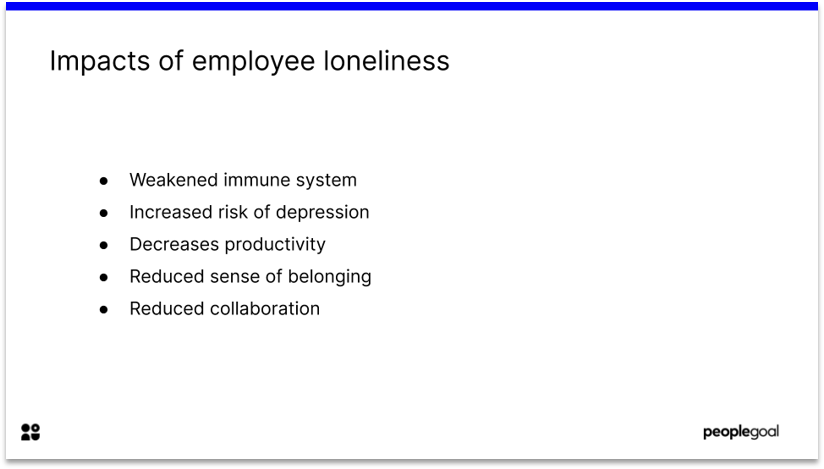
6) Communicate with empathy
Remote work comes with many benefits. But it is still a stressful time for many. Managers should keep this in mind.
One way to communicate with empathy is to establish trust. Managers may be nervous that their teams aren’t as productive during remote work. However, there’s no evidence to suggest work-from-home reduces productivity.
Micro-managing can make employees feel their managers assume the worst of them. Instead, check in with employees at the beginning or end of the day. Don’t be afraid to highlight any stresses you have experienced during remote work – making yourself vulnerable is a great way to open up conversations with staff.
Remember: there’s always time for empathy and kindness.
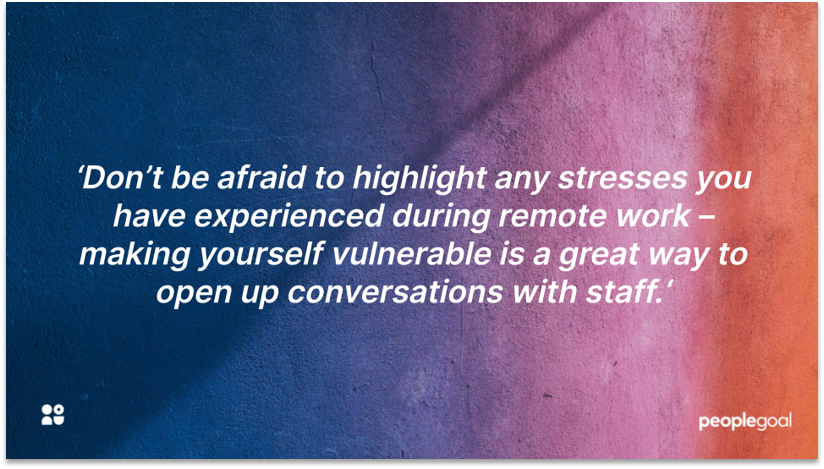
Take care with remote employee communications
Great managers are effective communicators. Listen actively to your employees. They are a company’s greatest asset and ensuring they have all the information they need is crucial to an organization’s success.
PeopleGoal supports remote teams in multiple ways. Our Pulse surveys can keep track of employee engagement. Our One-to-Ones app allows you to organize talking points for employee meetings. If you’re looking to set remote teams up for success, why not book a demo today?
Ready to 3x Your Teams' Performance?
Use the best performance management software to align goals, track progress, and boost employee engagement.

